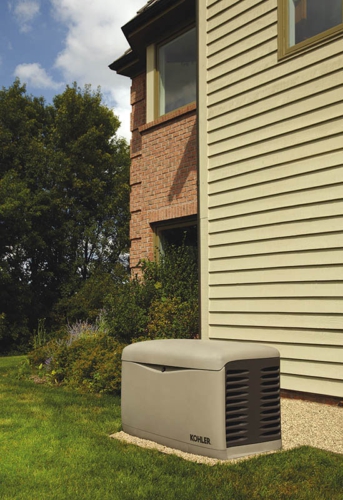
The experts at Kohler Generators have compiled 10 safety tips designed to help people protect their home, family and electronics in the event of an extended power outage.
- Develop a Weather Emergency Plan. The plan should include a list of important phone numbers in case you need to quickly evacuate your home (i.e. doctors, family members, etc.). The plan should also include an evacuation route, as well as an established meeting place in case you lose communication with loved ones.
- Create a Storm Bucket. Get a backpack or purchase a large plastic bucket with a lid from a local hardware store or home center. Stuff the backpack or bucket with three days’ worth of food and water. Other items should include a flashlight, battery powered/hand-cranked radio, first aid kit, money, medications and a CD or USB drive containing important documents. Store the kit in a place that is easily accessible in an emergency situation. For more tips on how to prepare for weather-related emergencies, visit the Federal Alliance for Safe Homes (FLASH). http://www.flash.org/
- Turn off major appliances. Shut off your water heater, stove and air conditioning unit. Unplug other appliances such as TVs, stereos, microwaves and computers. This will prevent damage to appliances and possible overloads to the system when power is restored.
- Leave a light on. It sounds simple, but leave at least one light on in your home so you can see when power is restored.
- Stay away from fallen wires, flooded areas and debris. Treat all down wires and anything touching them as though they have electricity running through it.
- Do not connect portable generators directly to the electrical system of your home. Electricity could flow backward into the power lines and endanger lives. Plug appliances directly into the portable generator, or hire a qualified electrician to connect the portable generator to your electrical system.
- If you’re running a portable generator, be sure to use properly rated extension cords (electrical load and length). Also, make sure the portable generator is properly vented to avoid carbon monoxide poisoning. Do not place a portable generator in your home or an enclosed space with limited ventilation like a garage or a screened porch.
- Familiarize yourself with your main electrical panel. You may have to turn off the main breaker or have to reset circuit breakers after a power outage.
- Inspect the area around your electricity meter. If you detect or suspect any damage, call your local utility provider.
- Consider installing a commercial-grade, standby generator. A standby generator is permanently installed outside the home similar to a central air conditioning unit. It runs on natural gas or propane and hooks up to existing gas lines. Standby generators turn on automatically when the power shuts off. A transfer switch constantly monitors utility power and transfers the electrical load to the generator if power is lost, protecting the home even if the home owner is away. A standby generator can power critical and sophisticated appliances and systems in a home, including lights, heating/cooling systems, refrigerators, sump pumps, home security systems and more.


